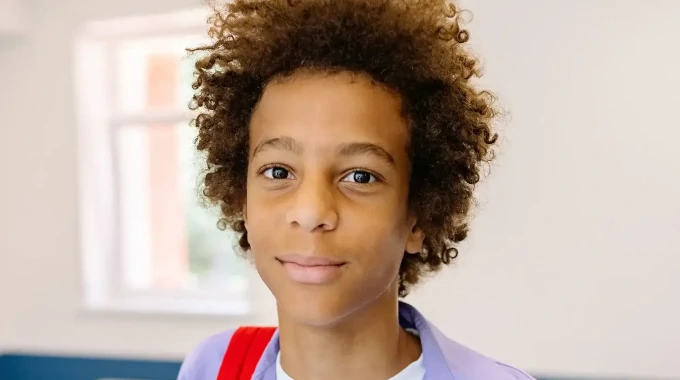Table of Contents
Is It Normal for a Teenager to Cry Every Day?

Updated and Fact-Checked May 2024 by: Christine Zambos, LMFT
Update list:
Updated statistics
Updated Parent’s approaches based on new studies
Updated facts based on cases attended in Clearfork Academy
Watching your teen cry can be both distressing and confusing for parents. Although we often associate crying with younger developmental stages, it can be a perfectly normal behavior for teenagers to cry.
During this stage of development the limbic system that drives emotions intensifies from puberty and heightened hormonal changes. Ensuring that teenagers get enough sleep is crucial for their emotional regulation and overall well-being.
Stress and anxiety from academic pressure, family problems or peer relationships mixed with these heightened hormonal states can all lead to a sudden outburst of tears from your teen.
It’s important for parents to keep in mind teenagers undergo extreme cognitive and biological changes. This period of life can be exciting, but can also cause anxiety and added stress.
A look Into Teenager’s Context
The teenage brain is still developing, and constantly being influenced by new experiences.
During teenage years the connections in the brain are still being formed. These support emotional learning, decision-making and self-regulation.
This is a normal developmental stage for teenagers and why they often get the reputation of being moody, intense or impulsive.
The hormonal changes happening in the brain, including the production of testosterone and estrogen, can make it hard for teens to regulate their emotions and biological clocks.
Next time you see your teen crying, don’t immediately freak out as this can be a normal part of development.
Reasons for Excessive Teen Crying

While normal outbursts and crying is typical for teenagers, if this is getting in the way of their daily functioning or accompanied by other symptoms, it is something to look out for. Your teenager crying for no reason may be a sign of a larger problem related to their mental health.
The first thing to do as a parent is explore deeper as to what could be causing their emotional outbursts rather than automatically ruling it out as “no reason”.
Teenage Depression
Depression in teenagers is one of the most common mental health disorders. According to a new report by the United Hospital Fund, as of 2022 6.7 million adolescents aged 12 to 17 suffer from Depression in the United States.
Signs of frequent crying spells paired with these other symptoms can be signs of depression in your teen, so parents may consider reaching out to a mental health professional if these are present:
- Crying frequently or for excessively long periods
- Lack of sleep or excessive sleeping
- Lack of appetite or binge eating
- Social withdrawal and isolation
- Fatigue and a lack of motivation
Anxiety
According to the NIH, childhood and adolescent anxiety has been diagnosed in nearly 25% of the adolescent population across the United States. Anxiety can lead to frequent crying brought on by negative thinking patterns, excessive worry and panic. Other symptoms of anxiety may even be physical, such as:
- Headaches
- Fatigue
- Muscle Tension
- Stomach Pain
- Trouble Sleeping
Stress
Like adults, our teenagers go through periods of stress as well. This can be brought on by internal hormonal and emotional changes as well as outer influences like academic pressure, social situations, or relationship problems. Crying from stress is not necessarily always a problem as this can be a healthy way for your teenager to release stress and tension in the body.
Hormonal Changes
Both teenage girls and boys have an influx of hormones flooding their body as they go through biological and sexual changes. This can intensify emotions, thoughts, feelings and even physical sensations.
Effective Strategies for Parents

It’s normal for parents to feel overwhelmed when their teens have unexpected outbursts. Some strategies below are great to support your teen during an emotional episode.
Active Listening
Sometimes parents want to jump to a quick fix to help their teen stop crying, but having a calm and present ear to listen to is all your teenager really needs sometimes.
Validating Feelings
Let your teen vent and validate how they are feeling. Sometimes adults assume teenagers have ¨nothing to worry about¨ but this is simply not the case. Teenagers often have stress from school, peer and social pressure and thoughts about their future. Ensure your teenager feels heard and develops a “no shame zone” so they don’t feel like a burden for crying no matter what age they are.
Provide a Distraction
Just like adults do when they are sad, sometimes the best method is providing a distraction. Watch a movie with your teen, make them laugh, play a game, take the dog on a walk, or get them out of the house. Sometimes teens feel big emotions and simply just need time to let the intensity pass.
Try the 5-4-3-2-1 Method
This is a simple coping strategy that can be helpful for parents to model for their teens during times of emotional distress. It is routinely used in patients with anxiety but has been proven to be helpful in a variety of situations to ground teens back to the senses in their body. Here are the steps to follow this simple grounding method:
- Identify 5 things you can see
- 4 things you can touch
- 3 things you can hear
- 2 things you can smell
- 1 thing you can taste
We are often quick to comfort our toddlers or younger children during emotional outbursts while wondering why teenagers cry? The next time your teen has a crying episode or emotional outburst remember what you read above and take the steps to explore their feelings with them and help build a safe space where they can feel comforted.

Online Resources
Psychology Today offers articles and a therapist directory, allowing you to search for therapists who specialize in group therapy for adolescents.
Child Mind Institute – This organization provides resources and articles on various mental health topics for children and adolescents, including information on group therapy.
National Alliance on Mental Illness (NAMI) – NAMI offers information and support for individuals and families dealing with mental health issues, including resources on group therapy.
Books
The Gifts of Imperfection: Let Go of Who You Think You’re Supposed to Be and Embrace Who You Are by Brené Brown – While not specific to group therapy, this book offers valuable insights into building resilience and fostering emotional well-being.
Group Work with Adolescents: Principles and Practice by Andrew Malekoff – This book focuses on the principles and practice of group therapy for adolescents, providing practical guidance for therapists and parents.
The Teenage Brain: A Neuroscientist’s Survival Guide to Raising Adolescents and Young Adults by Frances E. Jensen – Although not centered on group therapy, this book offers important insights into understanding the adolescent brain and emotions, which can be valuable for parents.
Sources
Wang Z, Whiteside S, Sim L, et al. Anxiety in Children [Internet]. Rockville (MD): Agency for Healthcare Research and Quality (US); 2017 Aug. (Comparative Effectiveness Reviews, No. 192.) Introduction. Available from: https://www.ncbi.nlm.nih.gov/books/NBK476265/
National Survey of Children’s Health. 2022. The Ripple Effects of the Adolescent Behavioral Health Crisis. Recent Trends and Impacts on American Adolescents, Families, and Society
Austin Davis, LPC-S
Founder & CEO
Originally from the Saginaw, Eagle Mountain area, Austin Davis earned a Bachelor of Science in Pastoral Ministry from Lee University in Cleveland, TN and a Master of Arts in Counseling from The Church of God Theological Seminary. He then went on to become a Licensed Professional Counselor-Supervisor in the State of Texas. Austin’s professional history includes both local church ministry and clinical counseling. At a young age, he began serving youth at the local church in various capacities which led to clinical training and education. Austin gained a vast knowledge of mental health disorders while working in state and public mental health hospitals. This is where he was exposed to almost every type of diagnosis and carries this experience into the daily treatment.
Austin’s longtime passion is Clearfork Academy, a christ-centered residential facility focused on mental health and substance abuse. He finds joy and fulfillment working with “difficult” clients that challenge his heart and clinical skill set. It is his hope and desire that each resident that passes through Clearfork Academy will be one step closer to their created design. Austin’s greatest pleasures in life are being a husband to his wife, and a father to his growing children. He serves at his local church by playing guitar, speaking and helping with tech arts. Austin also enjoys being physically active, reading, woodworking, and music.





